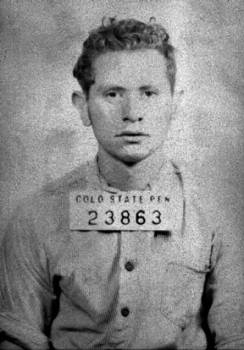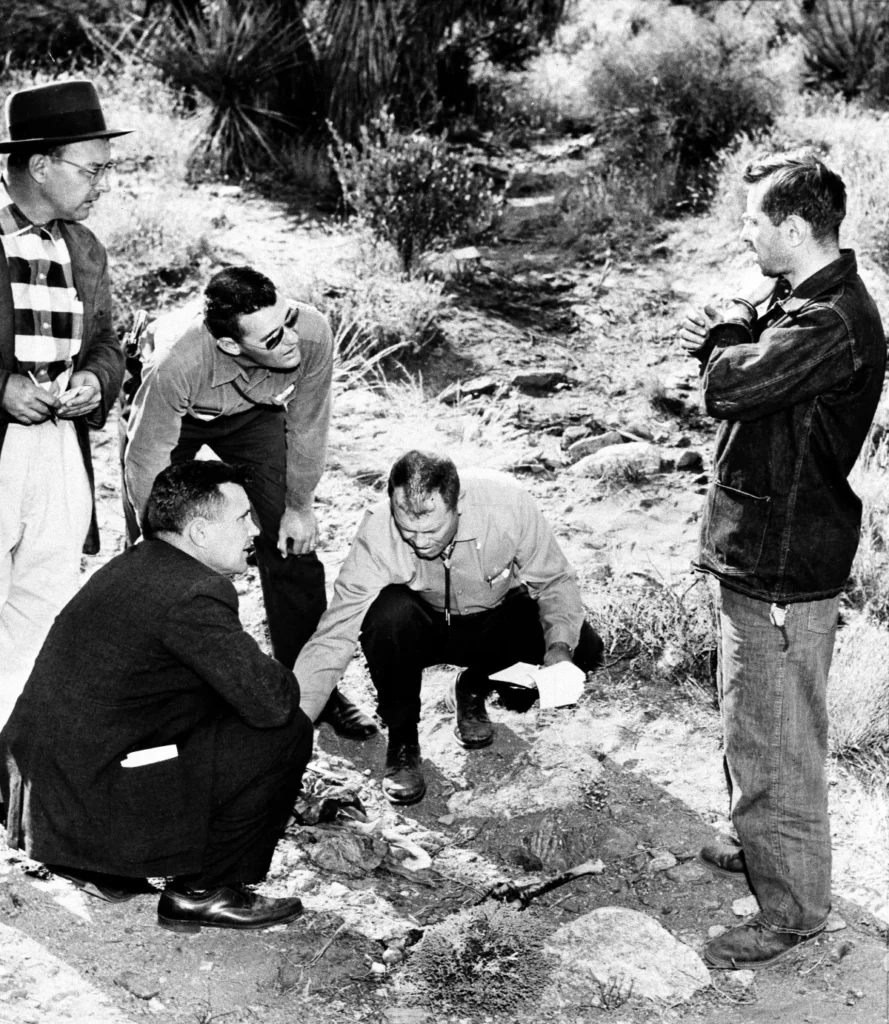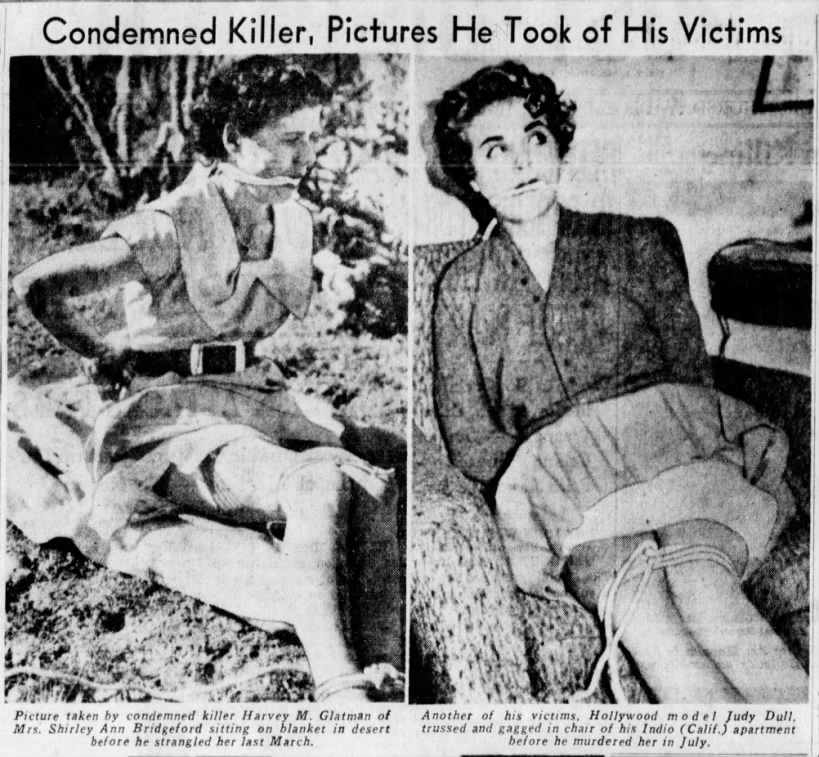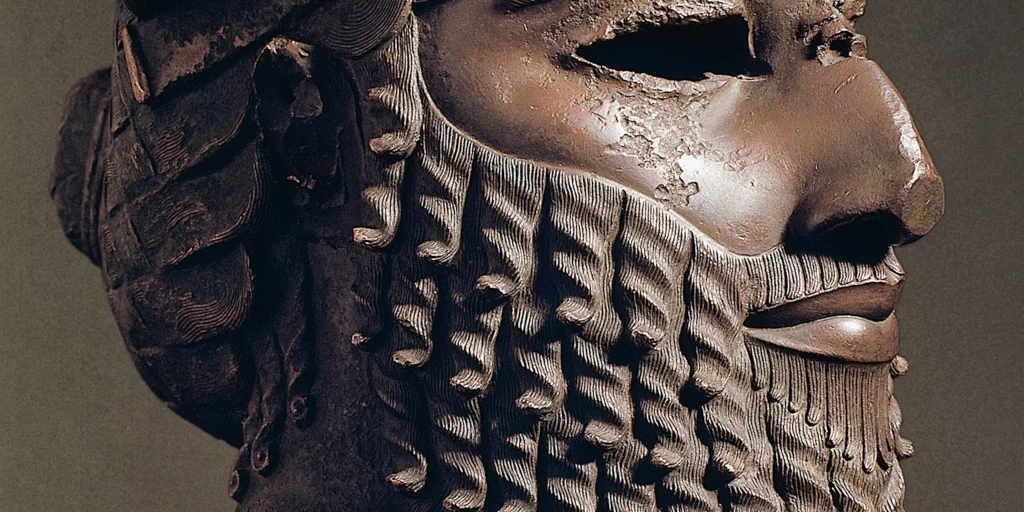In the darkest corners of true crime history, certain names stand out as chilling reminders of the limits of depravity in the human psyche.
Harvey Glatman, infamously known as the “Glamour Girl Killer,” carved a gruesome path through the 1950s, leaving a trail of victims in his wake.
His actions would redefine the safety procedures of the modeling industry and demonstrate the dark potential of meeting strangers, highlighting the risks that come with striving for success.

Harvey Glatman’s Troubling Childhood
Harvey Murray Glatman was born on December 10, 1927, in the Bronx, New York to Albert and Ophelia Glatman. They moved to Denver, Colorado when he was young.
Even from an early age, Glatman demonstrated troubling behavior that hinted at his disturbed psyche. As a young boy, he began experimenting with bondage, perhaps as a response to his parents’ extreme discipline against him.
He first tied a rope around his penis and pulled on it for sexual pleasure, and then escalated to suffocating himself. One time, he ran the rope through the bathroom drain and tightened it against his neck.
His parents grew concerned by his behavior. They took young Glatman to their family doctor, who assured the worried parents that he would grow out of it.
As Glatman entered his teenage years, his criminal record began to take shape. He began breaking into women’s apartments and stealing items such as their lingerie, and in one case a handgun.
Theft and breaking and entering proved to be a gateway to invading women’s lives though. He soon began stalking and sexually assaulting women.
He moved to New York and in 1945 he was arrested for sexual assault. His parents were in disbelief, and begged the judge to not send him away.
Their pleas did not work. He was sentenced to 5-10 years in a correctional facility, where he was possibly diagnosed as schizophrenic.
The Rise of Harvey Glatman
Crime author Martin Newman has studied Glatman and other serial killers for years. He claims that Glatman’s sociopathy allowed him to easily tolerate the incarceration process and appeal to the authorities that defined his life.
Through his research, Newman has seen that sociopaths learn how to act how authority figures expect. Even to the extent that they can even con polygraph tests.
In this case, Glatman was able to play the role of a reformed inmate well and demonstrate that he changed his behaviors. This manipulation earned Glatman a pardon in 1948 and he was released early.
In a twist of fate, he had spent two years of his sentence at Sing Sing correctional facility in New York, This is where another notorious serial killer and sexual assaulter, Albert Fish, had been incarcerated and executed a decade before.
Similarly, Fish had spent a short stint in Sing Sing prior to the bulk of his crimes, and also charmed his way out. Glatman was shaping up to be another serial killer in the making, although his target demographic and methodology would be drastically different from Fish’s.
Upon his release from Sing Sing, Glatman returned home to live with his parents for a short period of time. At some point after his parents’ deaths, he made his way to Los Angeles and opened up a television repair shop by the mid-1950s.
While he stayed out of trouble for a decade, Glatman’s twisted psyche would once again escalate his crimes in 1957, this time pairing sexual assault with murder.
When he was not repairing televisions, he also took up photography and continued to tie ropes, practicing his sadomasochistic craft. These hobbies became the center of his criminal activity and were a dangerous combination.

The Glamour Girl Killer
In postwar America, the fame and fortune of Hollywood entranced people around the country. Thousands flocked to Los Angeles for their chance at a big break.
Glatman began advertising himself as a photographer in modeling magazines to attract young women to his apartment. This earned him the moniker “Glamour Girl Killer.”
He promised that he could catapult the women into the spotlight with the snapshots he took of them. Little did they know that they were falling into the trap of a killer.
Judy Dull was the first to fall prey to his sinister tactics. The 19-year-old aspiring model was lured under the guise of a photoshoot with Glatman, hoping to break into the Hollywood scene.
Armed with a camera and sinister intentions, Glatman convinced Dull to return to his apartment with him. There, he subjected Dull to brutal acts of violence, including tying her up and sexually assaulting her.
He documented the acts with his camera, taking multiple photographs of her tied up. After he was satisfied with his sick photographs, he drove Dull out to the desert east of the city and strangled her with his favorite rope.
Dull’s murder marked the beginning of a string of atrocities. Glatman continued to exploit the dreams of young women seeking stardom. He relished in the personal trophies he took from the women he killed as well as the photographs that he took of their suffering.
He would use similar tactics to manipulate, assault, and murder two more victims: Ruth Mercado sought a model agency, and Shirley Bridgeford met Glatman through a Lonely Hearts ad.
Each met their end at the hands of a sadistic killer pretending to be a photographer who would change their life. It was not until his potential fourth victim, Lorraine Vigil, that Glatman was unable to complete his criminal ritual.
Vigil was in the car with Glatman as they were supposedly heading towards his studio for the shoot. However, she noticed that Glatman was taking the car out of the city and began questioning what was happening.
Glatman then pulled a pistol on her and attempted to tie her hands, but the resulting struggle saw Glatman shoot Vigil in the hip. Despite this, Vigil was able to wrench the gun from Glatman and in the process pull them both from the vehicle as a police officer drove by.
The officer arrested Glatman, who went on to admit to his other three murders, recounting the details with glee.

The Trial and Conviction
The ensuing trial would uncover Glatman’s disturbed history of violence against women in 1959. A search of his apartment would unveil the collection of photographs and trophies that Glatman took from his victims.
The prosecution had a strong case with this evidence. The photographs demonstrated in detail the sadistic steps that Glatman took in killing the women and his confession demonstrated the joy he took.
As Lorraine Vigil was the sole survivor of his crimes, she was able to provide damning testimony in court as well as the cruel methods Glatman took to try and abduct and kill her. The trial, which gripped the nation, found Glatman guilty on multiple counts of murder.
He was sentenced to death. In September he was executed in the gas chamber at St. Quentin.
In 2009, another Jane Doe from Boulder, Colorado was identified at Mitotyping Technologies in State College, Pennsylvania. The woman’s corpse had been found near Boulder in 1954.
It was clear she had been tied up and assaulted, which was Glatman’s signature. A woman claiming the body may have been her sister, met with the scientists there and assisted in getting a DNA match.
The woman was identified as Dorothy Gay Howard. Authorities believe that she was another victim of Glatman’s depravity. If this is the case, it may have been his first foray into sexual assault and murder rather than the heinous acts he would commit in the coming years.
Whether Glatman is responsible for her death or not, it is not known how many other murders he may have committed while still in Colorado.
The Legacy of Horror
Harvey Glatman’s brief but gruesome reign of terror left an indelible mark on the cultural psyche of 1950s America.
The moniker “Glamour Girl Killer” became synonymous with the dark underbelly of the pursuit of fame and the vulnerability of those seeking recognition in the glamorous world of Hollywood.
The Glatman case also triggered a reevaluation of safety measures in the modeling and photography industry. It prompted a collective awareness of the potential dangers that lurked behind seemingly innocuous opportunities.
The era of blind trust in photographers and the allure of instant fame underwent a seismic shift. Individuals became more cautious and vigilant.
Glatman himself may not be remembered by every actress and model, but the legacy of his evil has influenced each of their lives to keep them safe from similar sociopaths.
References
Geringer, Joseph. “Harvey Murray Glatman: First of the Signature Killers.” Crime Library. https://www.crimelibrary.org/serial_killers/predators/glatman/7b.html.
History.com Editors. “Serial Killer Harvey Glatman is Executed.” History Channel: This Day in History. https://www.history.com/this-day-in-history/a-serial-killer-is-executed.
The Longmont Times-Call. “‘Lonely Hearts Killer’ confessed to 3 murders.” The Denver Post, May 9, 2008. https://www.denverpost.com/2008/05/09/lonely-hearts-killer-confessed-to-3-murders/.

